|
AR, VR, MR, XR...all acronyms which may easily be understood by what name they represent, but not necessarily what they mean. The world of immersion tech can be complex and confusing...and that is just the terminology...not the actual technology. So how can educators navigate through this “virtual jargon” in order to start utilizing this awesome technology for the purpose of learning?
While the universe of immersion tech can be difficult and the challenge of overcoming barriers can be a gauntlet, We as educators will do what we do best in the face of adversity and opposition...fight for what is right for students. Join us in our journey to demystify the world of immersion.
1 Comment
Isolation. Unreal. anti-social. Introverted. All words that you may have heard about virtual reality. The negative stigma of digital technology, especially immersion technology, can be hard to overcome. The introduction of how to emotionally and socially interact with technology didn’t really come with an instruction manual. Bad habits became mythology, such as screen time and violent gaming. But is there a way back for immersion technology to provide solutions to life’s problems instead of contributing to them?
The answer is absolutely. Virtual reality is a new way to collaborate with others despite geographic barriers---whether for education, or personal connection. Watching movies with a loved one deployed around the world, pairing two classrooms on opposites side of the country to tackle solutions to world problems, or attending virtual conferences with perspectives from all continents represented should be enough to put out the isolation myth. Though in an unreal environment relationship building, strong connections and real world impacts start inside of us. Virtual reality has become a facilitator of the impossible that ripples into the tangible. In February of this year The New Yorker released an article entitled “Limiting Your Child’s Fire Time: A Guide for Concerned Paleolithic Parents.” Limiting fire time, having a set room in the cave where fire time occurs, and committing to non-fire family time, are all tongue-in-cheek criticisms that parallel the modern screen time debate, and being a newfangled technology, virtual reality also falls under this scrutiny. However, virtual technologies are becoming more sophisticated everyday. The rules are changing. And the new rules are being forged by those willing to trailblaze through the fire and highlight the benefits, regardless of misplaced blanket statements of technology use without understanding the impact on each individual. Companies and educational entities are starting to realize the impact cutting edge technology can have not only on education, but society as a whole. Conferences such as ISTE are bringing together some of these trailblazers, from business and education. In this episode we will provide guidance to be a trailblazer yourself by focusing on ISTE VR prometheans: educators, vendors, and companies that are coming together in one place to share ideas on immersion technology. Whether it is sessions, playgrounds, or social networking, we hope you find a recommendation to fan your immersive sparks into flames.
In this week’s episode, we interview Jaime Donnally, who is a passionate technology enthusiast who began her career as a math teacher, later moving into instructional technology. She began the #ARVRinEDU group and started a weekly twitter chat as part of her way to build community and collaborate with educators around the world using augmented and virtual reality in the classroom. She also provides professional staff development and training on immersive technology as an edtech consultant.
More recently she just published her first book, Learning Transported, which supports her goal of providing introductory resources for teachers. The book provides practical uses of augmented and virtual reality in the classroom. In this episode, speak with Jaime and learn a little more about where the book idea came from. We also learn about some of Jaime’s plans for ISTE, the International Society for Technology in Education conference, which is happening in Chicago on June 24-27th. Check out all of the ISTE Virtual Reality sessions here! Check out all of the ISTE Augmented Reality sessions here!
Games. I’ve always enjoyed the experience of games. I enjoyed the social experience playing games with family members growing up. I enjoyed sports growing up and the friendly competition to keep you motivated. Even more recently, I’ve enjoyed playing sports with friends, such as racquetball or basketball. When I’m playing sports with friends I forget about the workout, and just focus on the game. Experiencing the game itself can keep me motivated and without thinking about it I also get a great workout.
Increasingly, games are finding their way into everyday life. Many people are wearing fitbits and other fitness trackers, trying to reach their 10,000 steps a day. Nintendo’s Wii Fit has been a popular video game system since 2007, with the goal of allowing people to play video games while getting a workout. It’s even being used in some school physical education classes. Fitness watches, tracking your running, walking, heart rate all add to the collection of data about our workouts that can help to gamify your personal data. Some people call it the quantified self movement, as we try to beat our own and our friends’ high scores and try to keep streaks going through viewing our own data, charts, and graphs. Gamified elements in these experiences can prove to be motivating. It’s only natural that as virtual reality gains in popularity, this new experience medium is being reimagined for fitness experiences. In this week’s podcast, the Virtual Reality Podcast team tries to convince James why he needs to start to look into virtual reality for fitness. We discuss different apps and hardware utilizing virtual reality for fitness, as we try to convince him to start using them for motivation towards his fitness goals. Will we convince him to begin a virtual reality workout routine? Check out the episode to find out! Here are some of the platforms discussed in the episode. Beat Saber BoxVR Sound Boxing VirZOOM
Cardboard & cell phones, tethered headsets with USBs and HDMI cables. All promises of access to a powerful technology: virtual reality. When thinking about this promise, it was difficult to not get excited. It was also difficult to put into words what the experience was like or how it affected me on such a fundamental level of humanity. Thanks to friends, I was reminded of a movie my family, especially my daughter, thoroughly enjoyed...The Greatest Showman. What an awesome story. But, the lines that struck me most in the movie resonated in the same way that experience with modern virtual reality did. The lines are from a song, A Million Dreams…in fact, they are the opening lines.
“ I close my eyes and I can see
The world that's waiting up for me That I call my own Through the dark, through the door Through where no one's been before But it feels like home”
VR feels very much the same to me, a world I can call my own…a place no one has been before, but feels like home. Of course, equity in access to this technology has not been that easy. Cardboard brought it more to the masses, but only the masses with a capable smart phone. And those in education began the dance of finding phones that would work while still at a small price point. We became familiar with terms like pyrometer and accelerometer as we bought prepaid and unlocked Android phones that had mixed results for VR use. The cost aside, the smartphone didn’t give the greatest experience either. Low resolution and shoddy experiences would create another issue in what would be called virtual reality sickness. Many factors lead to this ache outside of the quality of experience, but it does play a large role in that disoriented sick feeling
So what about today? Over a year ago, you could hear educators proclaiming one possible solution, and it was so clear to those in education what needed to be done. Cell phones were becoming more powerful, but increasingly expensive for the simple fact it connected to a cellular service provider…something not really needed in a VR experience. What about a self contained device that didn’t require inserting a cellphone into a headset? A standalone vr experience that would have the strength of the most powerful cellphones, but not the expense of a cellular enabled unit. And maybe this standalone could even rival the tethered units someday. Shortly after this grassroots idea spread, Google announced their plans to develop a standalone VR device. They were not the only ones to come forward with such an idea. PICO released their own three degrees of freedom headset, the Goblin and Oculus announced they too would develop a standalone unit called Oculus Go. What do these lower cost standalone units mean for education, business, humanity? It means more diverse peoples can to experience virtual reality as I did.
“ I close my eyes and I can see
The world that's waiting up for me That I call my own Through the dark, through the door Through where no one's been before But it feels like home”
After our four part series on RP1, we thought it would be good to discuss what the VR podcast is and how it can be an awesome place of sharing and spreading ideas. But I do want to shout out to all those who have been so encouraging and provided feedback for our project we call The Virtual Reality Podcast. We take feedback to heart and try to improve with each episode based on your comments…so keep them coming!
First, we are planning multiple ways for you to get information you want about immersion technology. Of course, this podcast is the home base, but we also have others. Right now, we have a blog that accompanies every episode from RP1 and we will continue that tradition with our next podcast. We DO special event where we not only capture audio, but video. These can be seen primarily on our youtube channel. We also do livestream on FB…just look for @thevirtualrealitypodcast. In fact, you will find a video we just did with the four of us in Oculus Rooms using the new Oculus Go on YouTube that we recorded using FB livestream. And then we have our website, thevirtualrealitytpodcast.com. It has all this information, plus embedded audio from the latest podcast, the blog, podcast venues you can find us on, like iTunes, Google Play, Anchor, Stitcher, and a host of others. If you have a favorite podcast application and we aren’t on it, DM us on Twitter or message us on FB…we will get our content on those platforms! We also have other social media we are slowly venturing into, such as Instagram and LinkedIn. The links to those can be found on our website. Another area of our website that we are getting closer to launching is our resources area. This will be chopped full of information on VR, AR, MR, AI, 3D, and anything else immersion tech. We will also have ideas for application in education and in business…and probably other enterprise solutions as well. If you would like to blog on our site or add a resource, let us know! We love highlighting what others are doing in immersion tech…mainly because we are complete geeks when it comes to this tech. But moving beyond the ways we will make our content available, we want to engage with the community. We are building ways for this to happen and will be unveiling more in the coming months. For instance, we use the commonly used #vrpodcast hashtag to allow you to ask questions or post ideas on Twitter. We aren’t the only ones to use this hashtag, so other vr podcasters can also see your questions, comments, or ideas. This is what we want. We want to engage all of our community, including our brothers and sisters using like hashtags, such as #vrpodcast. Two groups that use this hashtag are VRHounds, I encourage you to check them out on YouTube by searching VR Hounds…they livestream under multiple usernames of the different hosts, and the very popular Voices of VR, which you can find on iTunes or at their website, voicesofvr.com. And this is just the first way we are engaging our community. We just recently got back from ImmersED 2018 in Marian Del Ray, California where we sat down with vendors, developers, school administrators, VR legends, and other immersion tech enthusiasts to share their story and pick their brain on immersion technology. One video is up already with guest Michael Fricano of I’olani School in Hawaii. Make sure to check out that vid on our channel and also Michael by going to edtechnocation.com or on twitter @edtechnocation. We will be posting more videos from ImmersED over the next few weeks, so be sure to subscribe on youtube to get updates. One of the beautiful things about Youtube is commenting, so please leave comments on the video, immersion tech, or about the virtual reality podcast. We are experimenting with interactive questions on our medium as well, so make sure to check out that Oculus Go video. One thing I forgot to mention about that particular video is what we shared. We each looked at an app we thought could have some educational implications. What was so awesome was Rooms actually ended up being the most impactful…and we didn’t realize it til we were in it. So I encourage you to get your hands on an Oculus Go to try out Rooms. If you do, and you try other apps, hit us up on social media with the #vrpodcast hashtag to share your experience. If you want to connect with us in person, we have some events coming up, with the biggest being ISTE from June 24th through the 27th. Thats a Sunday through Wednesday, but a lot of people start arriving on Saturday. I know I will, and I think Amanda Fox and Steven Sato will be coming in that Saturday as well. And I think Alex Chaucer is trying to work out the timing to also be in attendance. We are going to be capturing audio and video…and having playground time with some awesome tech. Stay tuned for times and locations for that. Also, a couple of us are presenting at ISTE, so come on by and connect with us there. Make sure to mention the podcast so we can recognize ya. I think there are other events in between now and ISTE, so make sure to follow us and the #vrpodcast hashtag to see when and where. And all of this is to showcase the awesome things happening in immersion tech. Whether you are a educator, student, administrator, sales rep, or a CEO, we want you to share your story and thoughts on immersion tech. Make sure to reach out if you want to come on the podcast, do a video with us, or just talk shop. We love connecting with others that have the same passion for technology. As for what comes next, get ready for some cool series of episodes on the VR podcast, on location videos, and even video stream from inside virtual reality. We are so excited to share our passion and cannot wait to connect with all of you!
We live and work in a time where technological advances are moving as fast as the speed of light. As an educator, it is our duty to adapt and evolve at a comparable speed to keep our strategies relevant, and engage the current generation of learners. This looks like checking our twitter feed and notifications for the newest app or strategy. Spending our personal time collaborating with colleagues across the world. Creating podcasts like this to share insights and ideas. To become better versions of ourselves and fulfill our paths so our students may due the same.
Reid Hoffman, a serial entrepreneur and author of The Start-Up of You, has a podcast episode where he talks about living life in permanent beta. That the ‘you’ right now is the best version of yourself at the moment, and we should continue to be a work in progress, building meaningful networks, and learning new skills to increase our value. This couldn’t be more true for the 21st century educator. Furthermore, teaching students to navigate digital realms and take part in meaningful collaboration through problem solving is at the heart of modern pedagogy. Technology has become intermingled with the art of teaching, and has become the arteries to deliver content, assess learners, and ease some of the load and accountability that weigh on the shoulders of teachers across the world. The internet has made this possible by making the world a little smaller with tools like Skype, Gsuite for Education, and social media, allowing us to tackle even the biggest of ideas And now we have VR.
In episode two, Steven asked you to “imagine the possibility of constructing new outcomes with “artificially intelligent virtual interaction” and joked he made that one up. I found out today that this capability actually does exist from Cathy Hackl, futurist and arvr content creator, and it is being called Reactive AI.
Again. The future is clearly now, and we have to continue to live life in BETA by BETAing this newfangled technology in our classrooms---by grabbing vr by the headset and finding ways to provide our students access and involvement beyond google expeditions, and beyond vr consumption. By providing feedback to developers on what these tools should look like, so we don’t recreate some of the same educational problems in the virtual reality that we have in reality. In reality our students can be anything. In virtual reality our students can experience anything….
Let’s look at how we can not only bring VR experiences to our students with the technology that exists now, and shift them to the role of creator.
References
https://www.vrs.org.uk/virtual-reality/history.html https://ecorner.stanford.edu/podcast/live-life-in-permanent-beta/ https://lethbridgecollege.ca/events/merging-realities-event-multiple-perspectives
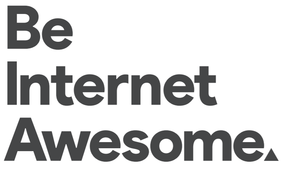
Safety and security online have been issues going back to the beginning of the Internet. There are special concerns for teachers and parents that persist today as more and more people consume an ever increasing amount of media daily and participate in social networks. In a main quote in the book “Ready Player One,” the protagonist Wade Watts states... “In the OASIS, you could become whomever and whatever you wanted to be, without ever revealing your true identity, because your anonymity was guaranteed.”
In Ready Player One, there is an anonymity that this guaranteed in the Oasis. In the real world, this is not the case. Many websites track you as you go from website to website with cookies. Even if your screen name is not your real name, there is a good chance that if someone wanted to find out who you are, they could. Anonymity is also what helps people do something called trolling, hiding behind fake names to post negative comments. I’ve noticed trolling being a big problem since the first days of the Internet. This has been one of the main problems with the Internet. Teachers must maintain professionalism in schools but also in their social media usage. There is a great responsibility that teachers and parents have toward guiding children in their usage of the Internet. Google has provided a set of learning modules around Internet Safety called ”Be Internet Awesome". Common Sense Media provides some good tools for helping to gauge appropriate Internet media content (such as movies or television programs), and offers suggestions for constructive conversation for parents/teachers to have with students. Still, as platforms and apps evolve, as educators we must continue to learn and understand these new platforms, their opportunities, and the challenges posed by them. As a college educator, I have seen benefits to representing myself professionally online. Using twitter, I represent myself in my Personal Learning Network, and I also maintain a personal website. For older students with the right mentoring, sharing online portfolios can be helpful for getting into grad school or getting an internship. Modeling positive digital citizenship can be a powerful tool. More and more there are resources emerging to help support the development of a positive digital identity. Understanding safety and security and internet privacy are elements of becoming an active digital citizen. I'm including a graphic from the DQ Institute that informs some of this work. Safety and security online are a component of digital citizenship. Also mentioned in the podcast is the The Social Institute, which advocates for the positive use of social media by providing guidance and curriculum. As an optimist, I like to think of Virtual Reality as a second try at the Internet. Could we see Virtual Reality platforms where there is no anonymity in the future? What would that look like? Would this solve the troll problem if everyone interacting online was authentic and tied to a real world identity? How can we learn from Ready Player One the movie, and have real conversations about security and safety with our children and students? Check out this week's podcast to hear our conversation about safety and security as inspired by the movie, "Ready Player One." One more thing...since we mention kid president in the podcast, here's a quick video of him addressing negativity on the Internet to help you #makeithappy. He's an example of a child on the Internet who is making a positive change in the world.
Largely debated and clearly not resolved, equity in education is an issue near and dear to many educators. From a high level, birds eye view, governing bodies do their best to address the needs of all students, regardless of social economics, race, gender and beliefs, with systems and procedures that attempt to address equity on a very broad scale. It is loosely these systems and procedures that guide the classroom educator and, at times, bind their teaching.
Throughout these systems and procedures, teachers are unapologetically expected to motivate and inspire their students to not just complete tasks but muster up the will to accel beyond what is asked of them, such as bonus question on a quiz. We differentiate our teaching tactics to account for inclusion so that all learners can, to the best of their ability, understand, process and retain the lessons being taught. So the question, what does poverty & equity look like in ready player one and what lessons can be learned by appropriately integrating new technologies like Virtual Reality and Augmented Reality?, might require an example.
Take for instance the need to complete a project. There’s this kid, the CKO, Chief Kid Officer of DigCitKids, @currancentral, who was asked to create a Native American village diorama in a shoebox. He asked his teacher if he could model the village in Minecraft. The teacher said no, the project must reside inside the shoebox. So he built the diorama in Minecraft but placed a description and a QR code that would take you to the Minecraft model, “inside”, the shoebox. He got an F. He thought outside the shoebox and used new and engaging technology to complete the assignment. I hope that as educators we consider the power of tools like Minecraft, VR and AR to inspire creativity thereby adding another option of expression for those learners these technologies resonate with. In Ready Player One the book Cline describes in detail what the educational system on Ludus looks like. He describes a flexible and customizable learning environment. One that I think could bring equity to learning whether your connecting from an affluent or impoverished neighborhood. He describes the fact that teachers can instantly take students on interactive virtual field trips which provide high levels of immersion translating into better understanding of the subject. Furthermore, we can also imagine that students had access to visit historical events in high fidelity and full immersion. Imagine too, the possibly of constructing new outcomes with “artificially intelligent virtual interaction”, yes I made that one up, an experience that would place you in a place and time in history that you could interact with and examine how different choices might have changed the outcome of history. In the book we see this type of technology used as Parzival is asked to complete a Flicksync of the movie WarGames. He is asked to recite dialogue as the character, David, and Parzival can deviate causing various changes to the Ficksync story and environment. Virtual Reality clearly has the potential to challenge users, break social and economic barriers and enhance access by providing engaging equitable access to learning.
Thanks to our listeners for joining us on this journey. If you liked our conversation today, don’t forget to check out our other episodes. We also want you to join in on the conversation. Use #VRpodcast to ask questions or comment on VR, immersion technology, or even about The Virtual Reality Podcast.
First, players had to find the hidden URL in the book that took players to a newly developed Atari 2600 Game called Stacks, another nod to Wade Watts’ (the book’s protagonist) community. The second was playing a Facebook game. And the third was setting a world record on one of various retro games. What would the prize be? Sticking to 80s nostalgia, Cline revealed that the competition's grand prize would be a 1981 DeLorean, similar to the one used in “Back to the Future”. While not a DeLorean, Ready Player One also received prizes: the Alex & Prometheus awards.
The day after the book rights were sold, the film rights were sold to Warner Brothers. It would be another 6 years or so before the book made it to the big screen, but the wait was worth it. Advances in available technology made the film visually spectacular, and its release compliments the current state of immersion technology. Hardware companies are releasing virtual, augmented, and mixed reality-ready gear at an exponential rate while developers are liberated by advanced software like Unity, which just so happens to be free.
But there is also another sector where VR has been emerging more and more with the increasing saturation of technology…and that’s education. With more schools increasing bandwidth and investing into 1:1 programs, it is a breeding ground for immersion technology experiences. With this influx of hardware, software, and experiences, it is inevitable that education will feel the shift and need to be prepared for what comes with such great power: great responsibility (shout out to Uncle Ben). Students are hungry to pioneer in the world of VR, but administrators and teachers must consider the effects of its usage, both positive and negative.
Our team discusses the impact VR has on both of these fronts, business and education, and shares insights on what can be expected now and in the future. As for Ready Player One, it certainly will help infuse virtual reality technology in the classroom. We just need to be prepared for it!
Thank your joining us on this journey. We hope you come back and listen to future episodes. We also want you, YES YOU, to join in on the conversation. Use #VRpodcast to ask questions or comment on VR, immersion technology, or even about The Virtual Reality Podcast.
|


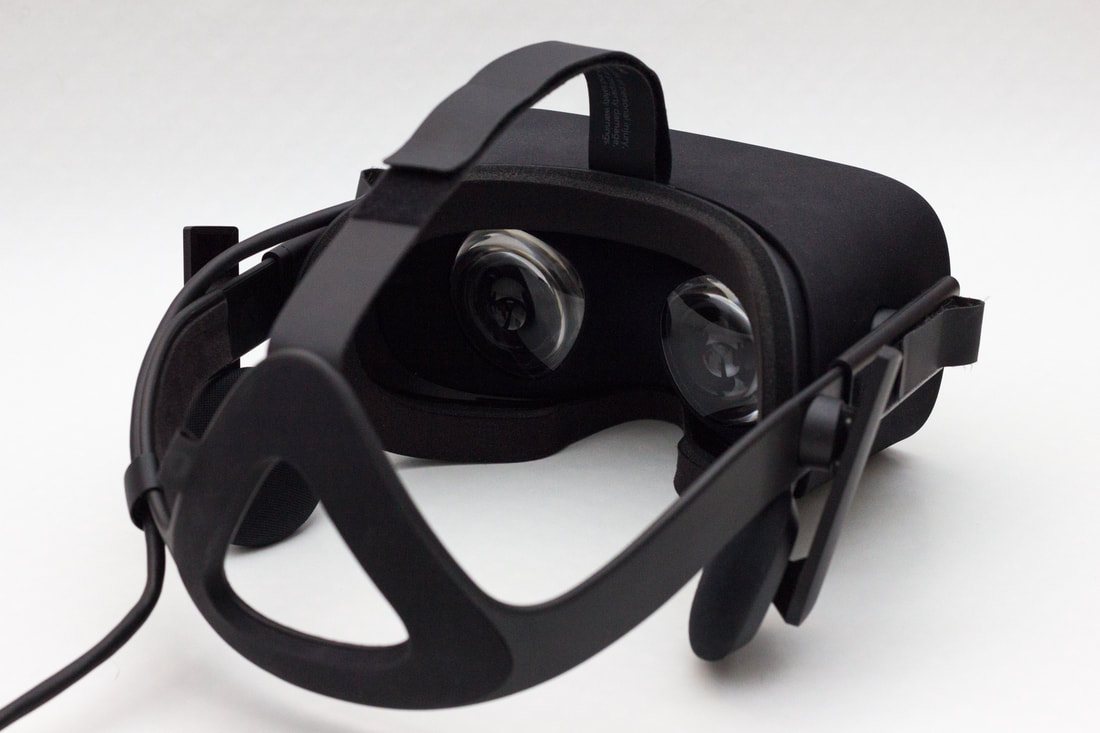
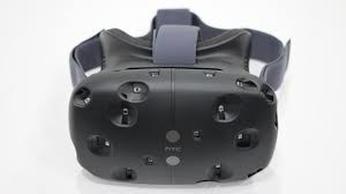



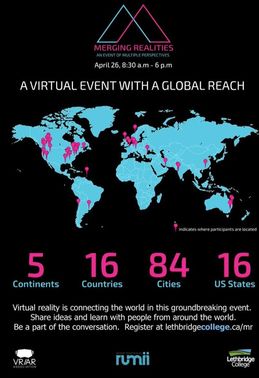
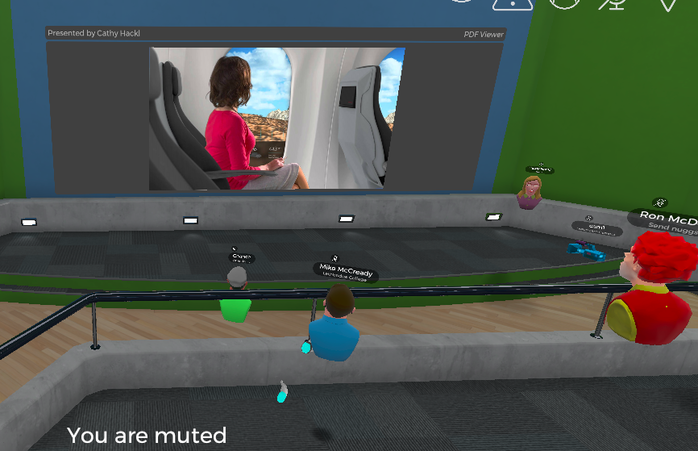
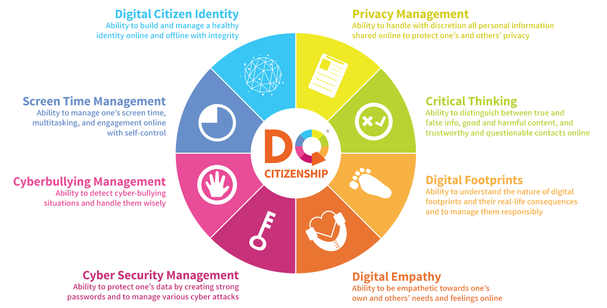

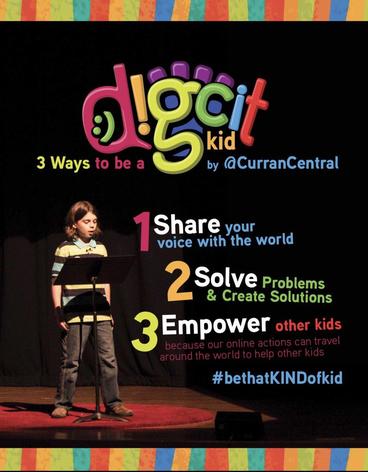
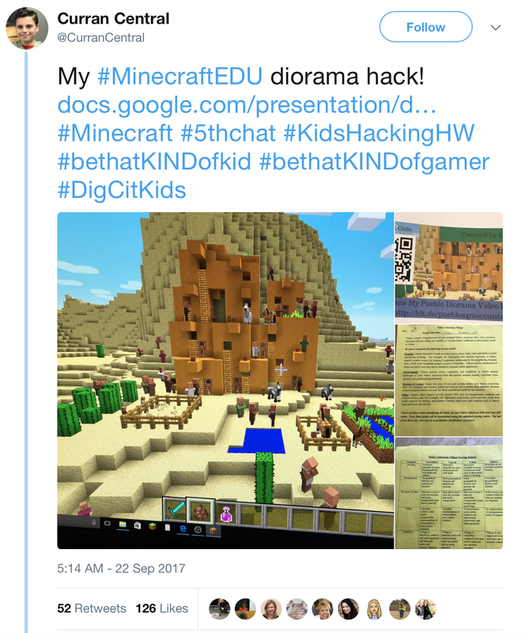

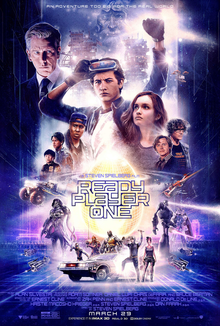
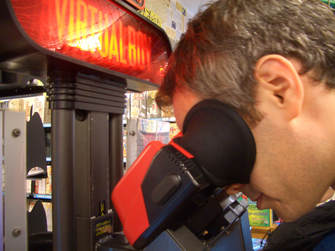

 RSS Feed
RSS Feed
